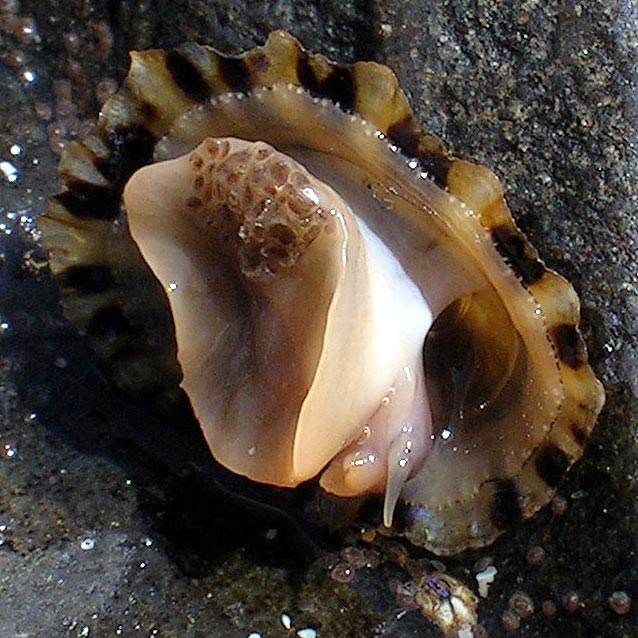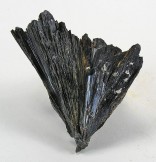
Limpets are a type of mollusk found along our coasts, in and around sub-tidal and “splash zone” ocean habitats. They slowly crawl on their single muscular foot to scrape algae off the rocks during high tide, and hunker down in their “home scar” during low tide. About a dozen species live in the bay and near-shore Pacific around the Bay Area. The lowly limpet isn’t often in the news, but a study from the University of Portsmouth published on February 18th, has revealed that these unobtrusive animals grow the strongest natural material in in the world – found in the tiny teeth on its rasping tongue, or radula. This knocks spider silk, long proclaimed as the strongest natural material, into second place.
This finding concerns much more than bragging rights of limpets versus spiders. The new study’s lead scientist, Dr. Asa Barber says the properties of the fibrous, high-strength teeth could be copied to produce things like “Formula 1 racing cars, the hulls of boats and aircraft structures” along with bullet-proof vests and computer electronics. This principle of looking at living things for engineering solutions is known as biomimicry. As the Biomimicry.org website puts it, “failures have become fossils,” and only the fit survive. Biomimicry has provided examples of viable solutions inspired by nature, ranging from wind turbines that mimic humpback whales fins for efficiency to supersonic trains designed like a bird head to reduce sonic booms. You can see some of these examples of how “failures have become fossils,” and only the fit survive at Biomimicry.org.

Do we need to worry about a sudden rush to harvest these limpets for these tiny teeth of titanic strength? Thankfully, no. Engineers don’t need the actual teeth, just the inspiration and “blueprint” of how they’re constructed to begin designing and synthesizing new materials with these same or similar properties. Next time you explore a shoreline at low tide, take some time to examine the intertidal life. Perhaps, if you’re lucky, you’ll spy one of the limpets that contributed to this new discovery. You can view a limpet video to see them up close and battling with a sea star. As Aldo Leopold once said in ‘A Sand County Almanac,’ “The first rule of intelligent tinkering is to save all the parts” of our ecosystems. You never know what might prove to be important in the future.
